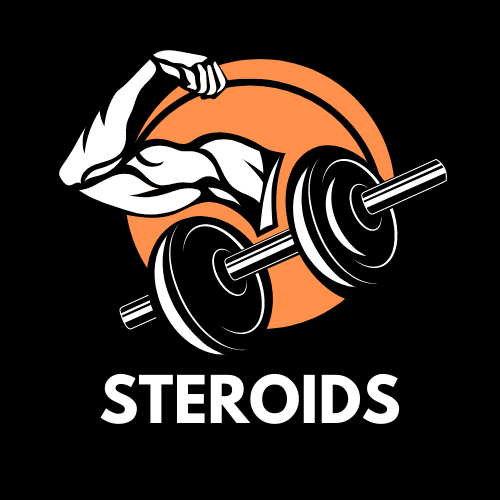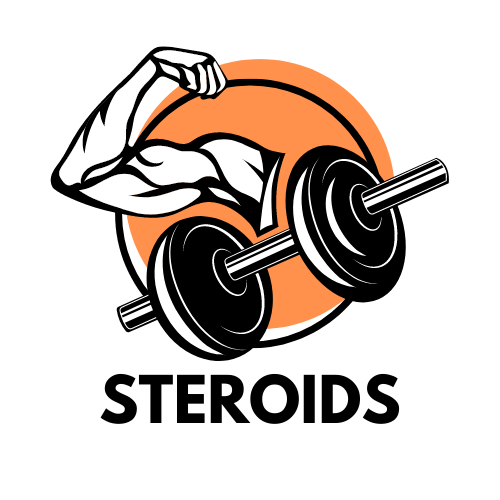Steroids, a term that often sparks contentious debate within both the sporting community and Hollywood, can be defined as synthetic substances similar to the male sex hormone testosterone. They are known for their potential to enhance athletic performance and physical appearance by boosting muscle strength and growth. While they have legitimate medical uses, misuse can lead to serious health issues or illegitimate edge in competitive scenarios.
Among the glitz and glamour of fame, steroids have found a growing clientele in celebrities, spanning the spheres of sports, movies and beyond. These popular figures seek the assistance of these powerful substances for a variety of reasons, such as achieving the ideal physique for a role, maintaining their spot in the limelight, or even outperforming their competitors. Expanding on these topics, we must emphasize the significance of understanding and critically examining the implications and motivations behind these choices, which can often become disguised under the fame's dazzling allure.

Why Do Some Celebrities Choose to Use Steroids?
For some celebrities, the allure of a perfectly sculpted physique or the edge for athletic supremacy is too tempting to pass up. Steroids, with their promise of speedy results and amplified muscle growth, often become the tools of choice. This drive for physical perfection is particularly high in industries where a certain body type is idealized and might dictate the opportunities afforded to them. Frequently, an actor might be chosen for or dropped from a role based on their physical attributes and how well they fit the character.
Sportspersons living in the limelight might resort to steroids to get ahead in their fields. Desirable gains such as enhanced endurance, accelerated recovery times, and muscular growth can amplify a competitor’s edge, irrespective of the sport. Over the decades, numerous professional athletes have faced charges, penalties and loss of reputation for their involvement with these substances, yet, for some, the risk might seem worth the potential reward.
In stark contrast, the aging celebrity cohort may turn to steroids not for additional strength or beauty but to combat the inevitable decline that comes with age. Testosterone, a commonly misused steroid, can help mitigate the effects of aging, such as reduced energy levels, slowed metabolism, and loss of muscle mass.
However, the use of steroids is not without its drawbacks and risks. They are not magical solutions, and their misuse can lead to severe health complications. High on this list are cardiovascular problems such as heart disease and stroke. Psychological effects can also be severe, ranging from increased aggression, mood swings, and even, in some cases, psychosis. Given the potential dangers, the choice to partake often seems baffling.
Despite these potential pitfalls, the prevalence of steroids among celebrities continues, driven by societal expectations, professional demands, or personal aspirations. The continued misuse illustrates the lengths some may go to maintain an image, performance or both, even in the face of potential harms. So, it’s crucial to understand the circumstances that drive such choices, not to celebrate them, but to better comprehend and address the pressure points that make them appealing in the first place.
Some Popular Stars Known for Using Steroids Plus Their Appearances Before and After Steroids
In the glamorous universe of stardom where appearances matter, it’s not unheard of for well-known figures to resort to drastic measures including steroids to alter their physique. Consider the case of popular actor Sylvester Stallone, the face of the iconic “Rocky” series. Seen in a noticeably leaner avatar in the first movie, Stallone’s physique appeared increasingly muscular in later installments – a transformation attributed in part to his admitted use of steroids.
Similarly, Arnold Schwarzenegger, a name synonymous with bodybuilding, openly confessed to using steroids during his time as a competitive bodybuilder. Known for his impressive physique even before turning to Hollywood, Schwarzenegger’s muscular build in movies like “Predator” and “The Terminator” was even more pronounced – a result, it’s believed, of his steroid usage.
Sports personalities too have been associated with steroid use, with former baseball star Barry Bonds being one of the most high-profile examples. Bonds, who held an impressive record even before allegations of steroid use arose, showed notable physical changes over his career which raised eyebrows. His physique grew more muscular, and his performance surged, making many speculate about the role of steroids in his transformation.
Less known perhaps is the case of popular performer Bolo Yeung, the muscled adversary in numerous martial arts films starring Bruce Lee and Jean-Claude Van Damme. Before his days in martial arts cinema, Yeung was a bodybuilding champion. His on-screen appearance sported an enhanced muscular physique – a stark contrast with his earlier leaner look. It was later revealed that his transformation was aided in part by the use of steroids.
These examples are but a glimpse into the larger prevalence of steroid use among celebrities. From enhanced musculature to the potential for improved performance, the changes made possible by steroids can be significant. However, amidst tales of transformations and perceived glory, the potential downsides and ethical implications of such choices must never be ignored.
Various Steroid Cycles that Male and Female Celebrities Have Done
Steroids use in the celebrity circuit isn’t as straightforward as taking a daily dosage. To achieve desired results and minimize side effects, users adopt various cycles. One such method is the “Bulking Cycle”, often chosen to gain muscle mass rapidly. Celebrities aiming for a significant physique transformation for a role might gravitate toward this cycle. In it, one can take potent steroids such as Dianabol or Anadrol for a period, often followed by a phase of reduced intake or cessation – a “rest” or “off” period to let the body recover.
While bulking up is one desired outcome, others may seek to enhance muscle definition by shedding subcutaneous fat, often achieved through a “Cutting Cycle”. In this setup, substances such as Winstrol or Anavar are used, well-known for their fat-burning properties. Celebrities preparing for physically demanding roles or those who desire highlighted musculature often use this technique – think of actors playing superheroes or athletes preparing for a season.
The third common cycle, the “Stacking Cycle”, involves the simultaneous use of multiple steroids to maximize benefits or counteract side effects. This method seems attractive to those desiring rapid, compounded results. For instance, bodybuilders preparing for competitions might use this cycle to fast-track their preparation.
Now, steroid practices differ between men and women due to differences in physiological response and desired outcomes. Women generally prefer cycles with milder steroids such as Anavar or Primobolan, which are less likely to induce severe side effects. A cycle might be shorter than men’s and incorporate longer rest periods. These modified cycles often aim to help them gain lean muscle or reduce body fat without significantly affecting their femininity.
In conclusion, varying steroid cycles cater to different outcomes, be it mass building, fat loss, or rapid improvement in physique. But it’s worth remembering that while these practices are prevalent among some celebrities, the choice to use such substances should not be taken lightly. The possibility of lasting harm and ethical concerns over their use are hefty prices to pay for temporary gains.
Actors that Have Used Steroids
When it comes to the silver screen, physical appearance plays a vital role and actors may turn to steroids to attain that sought-after physical transformation. In some cases, these actors have openly discussed their steroid usage. Mickey Rourke, for instance, the star of “The Wrestler,” admitted to using steroids to achieve the shredded physique required for his role as a professional wrestler. His inspiring portrayal of the character would likely have been challenging to achieve without such external assistance.
Another actor who admitted to steroid usage is Dwayne “The Rock” Johnson, a former professional wrestler turned Hollywood megastar. Johnson acknowledged utilizing steroids in his youth as an aspiring athlete. Today, his iconic muscular physique has garnered him roles in movies such as “Jumanji” and the “Fast and Furious” franchise. It is worth noting, however, that Johnson has clarified that he stopped using steroids during his wrestling career and has since stressed the importance of natural bodybuilding.
Chris Bell, best known for his directorial work in “Bigger, Stronger, Faster,” not only delved into the controversial topic of performance-enhancing drugs but also candidly admitted to using steroids in the past. Recognizing the potential physical harm, Bell shared his experiences not to promote but to caution others about the potential repercussions on overall well-being.
While these actors have been forthright about their past or present usage of steroids, many others keep such practices hidden, which can inadvertently mislead the general public regarding the physical appearance achievable without these substances. As the adoration and pressure faced by actors continue, so too does the temptation to turn to steroids for rapid alteration of one's physique.
In conclusion, several Hollywood celebrities have acknowledged using steroids to enhance their appearances or performances. Although these instances may be only the tip of the iceberg, their admissions aim to inform, enlighten, and in some cases, caution against the effects of using such performance-enhancing drugs. The continued focus on the topic serves as a reminder that building an ideal body takes effort, dedication, and sometimes a bit of external help – help, that might not always be for the best.
Baseball Players on Steroids
The baseball diamond has not been immune to the influence of steroids. Many players have faced scrutiny, allegations, and even suspensions related to steroid usage. Among the most notorious examples is Barry Bonds, who held an exceptional record even before suspicion about his doping arose. As his physique became more muscular and his performance surged, many speculated that steroids played a role in his transformation – a suspicion later confirmed by his admission of using performance-enhancing drugs.
Another high-profile case is that of Mark McGwire, who became a household name in the late 1990s when he and Sammy Sosa competed in a season-long race to break the single-season home run record. McGwire would later admit that he used steroids to sustain his incredible performance. Sosa, on the other hand, never admitted to using steroids but was reported to have tested positive for performance-enhancing drugs in 2003.
Roger Clemens, a famed baseball pitcher, also faced allegations of steroid use. Strikingly dominant on the mound and named an All-Star 11 times, his career witnessed a remarkable resurgence during the latter half, defying the usual decline expected with age. Accusations about steroid usage emerged in the Mitchell Report, a comprehensive document on doping in baseball, but Clemens has consistently denied these claims. Despite his vehement denial, the allegations tainted his once-sterling image.
Alex Rodriguez, another superstar who fell under the cloud of steroid suspicion, eventually admitted to using them early in his career while playing for the Texas Rangers. As one of baseball’s highest earners, Alex Rodriguez’s public acknowledgement once again emphasized the pervasiveness of performance-enhancing drugs among athletes looking for an edge in the highly competitive world of professional sports.
In conclusion, baseball has seen its fair share of scandals involving steroids. Many talented players have chosen this path, succumbing to the lure of amplified performance and fame, despite the risks and ethical implications of these substances. These stories serve as a reminder that the drive for success can often obscure the lines between right and wrong, leaving a tainted legacy in its wake.
Popular Bodybuilders Who Use Steroids or Have Used Steroids in the Past
The competitive landscape of bodybuilding features tales of determination, discipline, and often, the controversial use of steroids. Arnold Schwarzenegger, undoubtedly one of the biggest names in bodybuilding, belongs to this saga. A seven-time Mr. Olympia winner, Arnold admitted to using steroids during his reign, when substances were not classified under the illegal category. His astounding success left an indelible imprint on the sport, and he has since advocated for natural bodybuilding.
Another heavyweight from the bodybuilding circuit, Dorian Yates, has been candid about his steroid use. A six-time Mr. Olympia winner, Yates has championed an absolute transparency approach when it comes to steroids. He acknowledged using these substances as part of his bodybuilding regimen but underscored that their application must come with proper knowledge and responsibility.
Flex Wheeler, blessed with one of the most aesthetically pleasing physiques in bodybuilding history, also makes the list. This four-time Arnold Classic winner admitted to using steroids during his career. However, like Schwarzenegger, Wheeler has become an advocate for natural bodybuilding, cautioning aspirants about the potential repercussions of steroid usage.
Finally, the journey of Ronnie Coleman, an eight-time Mr. Olympia winner, affirms the steroid narrative. Known for his superhuman strength and colossal size, Coleman attested to the utilization of steroids under medical supervision. He emphasized that his steroid use was always within the shadows of legality, not straying into illicit territory.
In conclusion, the use of performance-enhancing drugs is common in the bodybuilding fraternity. Some iconic bodybuilders have been forthcoming about their use in a sport where muscle size and symmetry reign supreme. While these substances have played a part in their journey, these champions stress that steroids are not a shortcut to success. They insist that commitment, perseverance, and relentless hard work constitute the real key to bodybuilding prowess.
Other Athletes that Used Steroids
Let’s shoot straight from the hip and talk about a persistent issue: Steroid use among athletes. It’s not confined to any single sport. Let’s kick off with Lance Armstrong, an inspirational figure who vanquished cancer and went on to claim seven Tour de France titles. However, his triumphs were shadowed by speculation, which turned out to be true – he admitted to using performance-enhancing drugs throughout his career. His confession took the shine off his victories and unfortunately led to his fall from grace.
Now, shifting gears to the octagon, we find another notable example. MMA fighter Anderson Silva, once considered the best pound-for-pound fighter in UFC history, tested positive for steroids in 2015. His brilliant legacy was stained, leaving fans disappointed and echoing the often somber reality in the high-intensity world of professional sports where pressure to perform can lead to disillusion.
If we pivot to the athletics track, we encounter Marion Jones, a former world champion track and field athlete. After capturing hearts with her speed and endurance, Jones confessed to steroid use in 2007. Her admission resulted in the stripping of her Olympic medals, once again underscoring the consequences that accompany a decision to use steroids.
Lastly, but certainly not least, is Ben Johnson. The Canadian sprinter shot to fame after defeating his American rival, Carl Lewis, in the 100m race during the 1988 Seoul Olympics. His victory was short-lived. He tested positive for steroids, leading to his swift downfall, and a gold medal slipped from his fingers.
In short, wherever there’s competition, the temptation to take a dishonest shortcut may follow. Cases of steroid use span across sports, tainting the reputations of individuals who once stood on pedestals of glory. Their stories serve as powerful, sobering lessons to budding athletes: remember the value of integrity over instant victory.
When is Anabolic Steroid Use Considered Safe?
Anabolic steroids sometimes receive a nod of approval, but not in the athletic arena. They’re really only given the green light under medical supervision and for a number of specific conditions. For instance, they have a critical role in helping people who struggle with hormonal issues. Testosterone deficit or delayed puberty are typically addressed using these substances. They’re also targeted at treating muscle wastage conditions, such as that faced by patients with diseases like cancer or HIV.
Remember, though, this doesn’t make steroid use a free-for-all. These substances should be used only when prescribed by an expert in the field. The legal use of steroids not requires a prescription but should be followed according to the dosages and frequencies.
Steroid use under medical supervision isn’t long-term, either. It’s usually limited to the time it takes to get the health issue under control. Steroids are potent substances and long-term use can lead to undesired side-effects, such as potential liver damage, alterations in blood lipid levels, or even psychological effects.
So, while it’s tempting to think of steroids as a quick-fix solution, it’s important to consider their full implications. They are powerful substances that should be taken only under strict guidance and for specific medical circumstances. The adverse effects of inappropriate use can be severe and life-altering, a terrifying cost for anyone considering them as an unlawful tool to get ahead.
In closing, the rule of thumb regarding steroid use is straightforward – only under medical supervision and for specifically prescribed reasons. Straying from this guideline veers into unsafe territory. As the saying goes, it’s always better to be safe than sorry.

Conclusion
To bring it all home, anabolic steroids are undeniably a double-edged sword. Sure, they bring benefits when used appropriately and under supervision for certain medical cases. But in the wrong hands, the misuse is more than just a walk on the wild side, it brings forth a whirlwind of health issues and legal consequences. From athletes tarnishing their legacies to everyday individuals putting their lives at risk for momentary gains, the downsides are far from negligible.
And while it’s true that these substances have played a part in the high-stakes careers of some athletes and bodybuilders, they stress that it’s not a shortcut to success. Strength, resilience, and hard work remain irreplaceable. So, before you ever consider going down the steroid lane, remember: Slow and steady always wins the race. Keep pounding the pavement, put the work in, and the rewards will follow. Because there’s no prized monument more impressive than a body built by perseverance and discipline.


